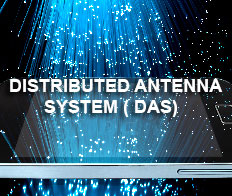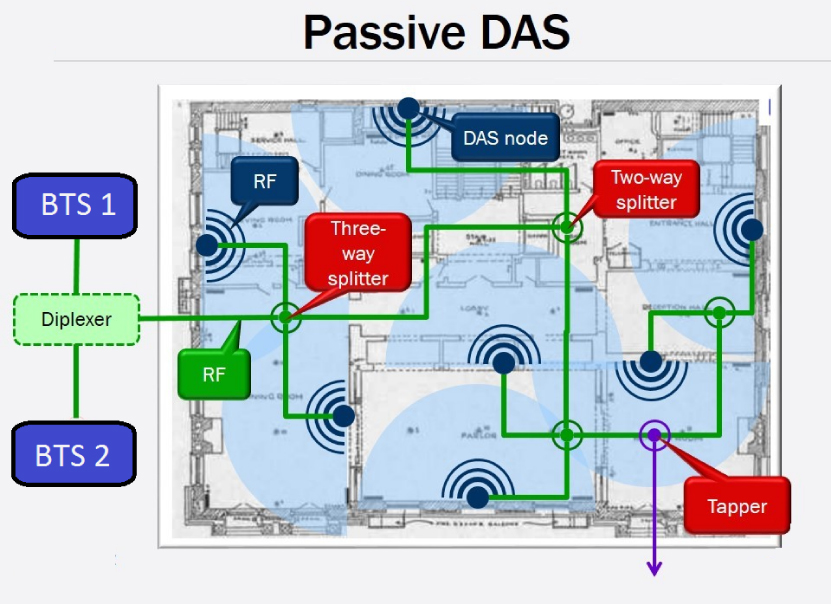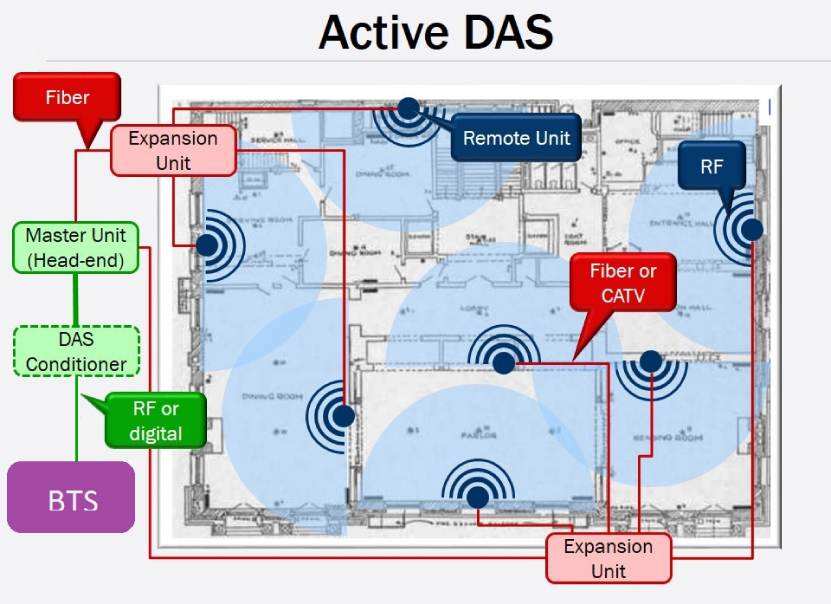
Products
Distributed Antenna System

Passive and Active DAS solutions
DAS solutions comes in a wide variety of technologies, shapes and sizes since the result has to accommodate the specific requirements of the needs. One obvious differentiation is where the DAS is located.
Indoor DAS (iDAS) installations are deployed within buildings and other structures, while outdoor DAS (oDAS) provides coverage out in the open air. A variant of iDAS, the most common DAS deployments, refers specifically to DAS installations in facilities with either a lot of space, a lot of people, or both.
EMTS DAS systems are broadband in nature and cover the frequency ranges from FM through to 2.7GHz. Our DAS can provides a combined DAS solution including public safety and cellular bands in one OMU (Optical Master Unit) or in one Fiber Remote Unit (FRU) This enables network operators, enterprises or public safety authorities to operate one.
integrated DAS with a mixture of different remotes locations & technologies including VHF, UHF, GSM, WCDMA (3G), LTE (4G) or GSM-R thus providing coverage for a variety of services throughout the environment. An integrated DAS architecture reduces both initial deployment and ongoing operational costs.
EMTS DAS systems are easily configured either locally or remotely via a simple GUI interface or using the advanced NMS system. Multiple types of wireless modems are supported.
Passive DAS

Active DAS

Fiber SYSTEM ARCHITECTURE
Point of Interconnect (POI)
Optical Master Unit (OMU)
Fiber REMOTE UNIT (FRU)
Cellular Fiber Distribution Antenna System (DAS)

- Advanced Tri-Band, Dual Band or Single Band system supporting all wireless air protocols includes GSM, WCDMA 3G, LTE 4G, WiMAX operating from 450MHz, LTE 800MHz , SMR and Cellular 850MHz , 900MHz, PDC 1400MHz, AWS 1700MHz , DCS 1800MHz, PCS1900 MHz, UMTS2100MHz, and LTE 2600MHz.
- Supports multi-band, multi-operators and multi-technologies applications.
- Comply with ETSI, 3GPP and LTE 4G standards
- 40dBm Downlink power per band, designed for in building or outdoor deployments
- Easy field installation and maintenance, reduces rollout and operational costs
- Advance monitoring systems with the possibility to send alarms via fiber cable from master to slave or via GSM modem.
- Four (4) Remote units per master unit, designed to connect to POI (Point of Interconnection) to support multi-operator deployments.
- Compact Size in IP65 enclosure (Aluminum-alloy).
In Builiding DAS - Poinit Of Interface unit (POI)

- US and EU types.
- High Performance and high reliability with up to 16 inputs (4 per band) combined into up to 4 outputs.
- Very cost effective antenna sharing solution for Indoor/Outdoor applications
- High power BTS conditioning 150 watts per port.
- Very Low Passive Inter-Modulation (PIM),
- Extremely low Insertion loss.
- DAS vendor neutral, support duplexed and non-duplexed signal and uplink diversity
- Programmable Dynamic DL Power Control
- Optional for Built-in Power meters to monitor input and output power.
- Optional for remote and local configuration, management and monitoring of alarms
- Plug-and-play configuration, Indoor, outdoor or 19-inch Rack types.
Public Safety Fiber Distribution Antenna System (DAS)
GSM-R Fiber DAS

- Fiber Optic RF Repeater is a reliable solution to extend and improve the coverage area of GSM-R network
- Consists of two main modules, Master and multiple Slave units.
- 33, 37, 40 or 43dBm composite output power, meet systems standards
- Easy field installation and maintenance reduces rollout and operational costs
- The signal transmission in fiber optic repeater is not disturbed by outside influences
- Provide very quick RF coverage service to your GSM-R Base-Station
- Compact Size and High Performance in waterproof enclosure suitable for outdoor and indoor installations
- Remote unit design for wall mounting &Base unit design for 19-inch rack

